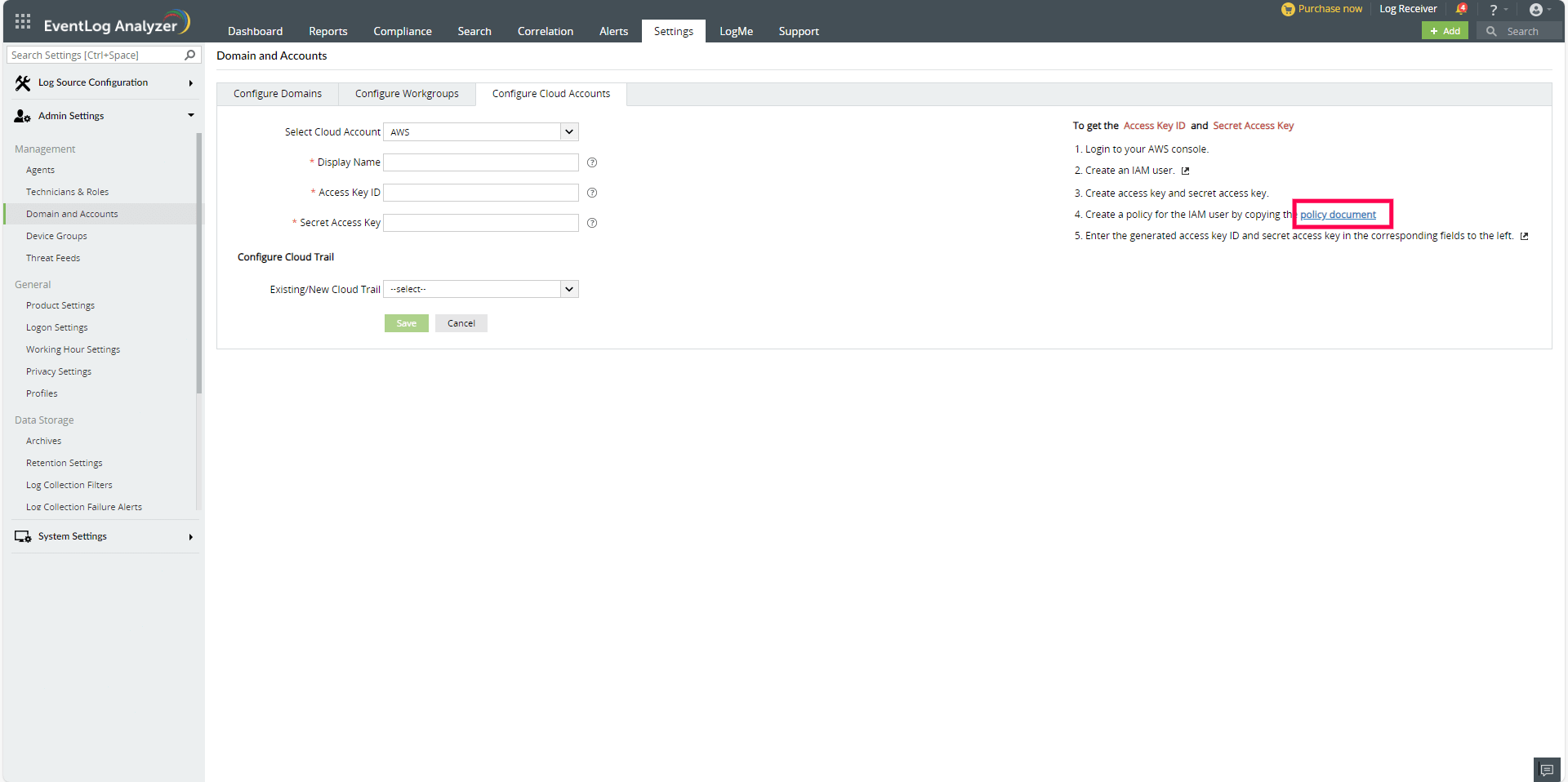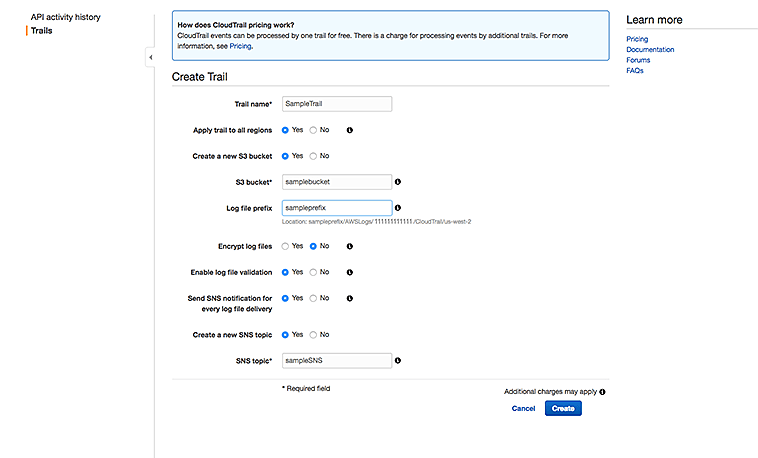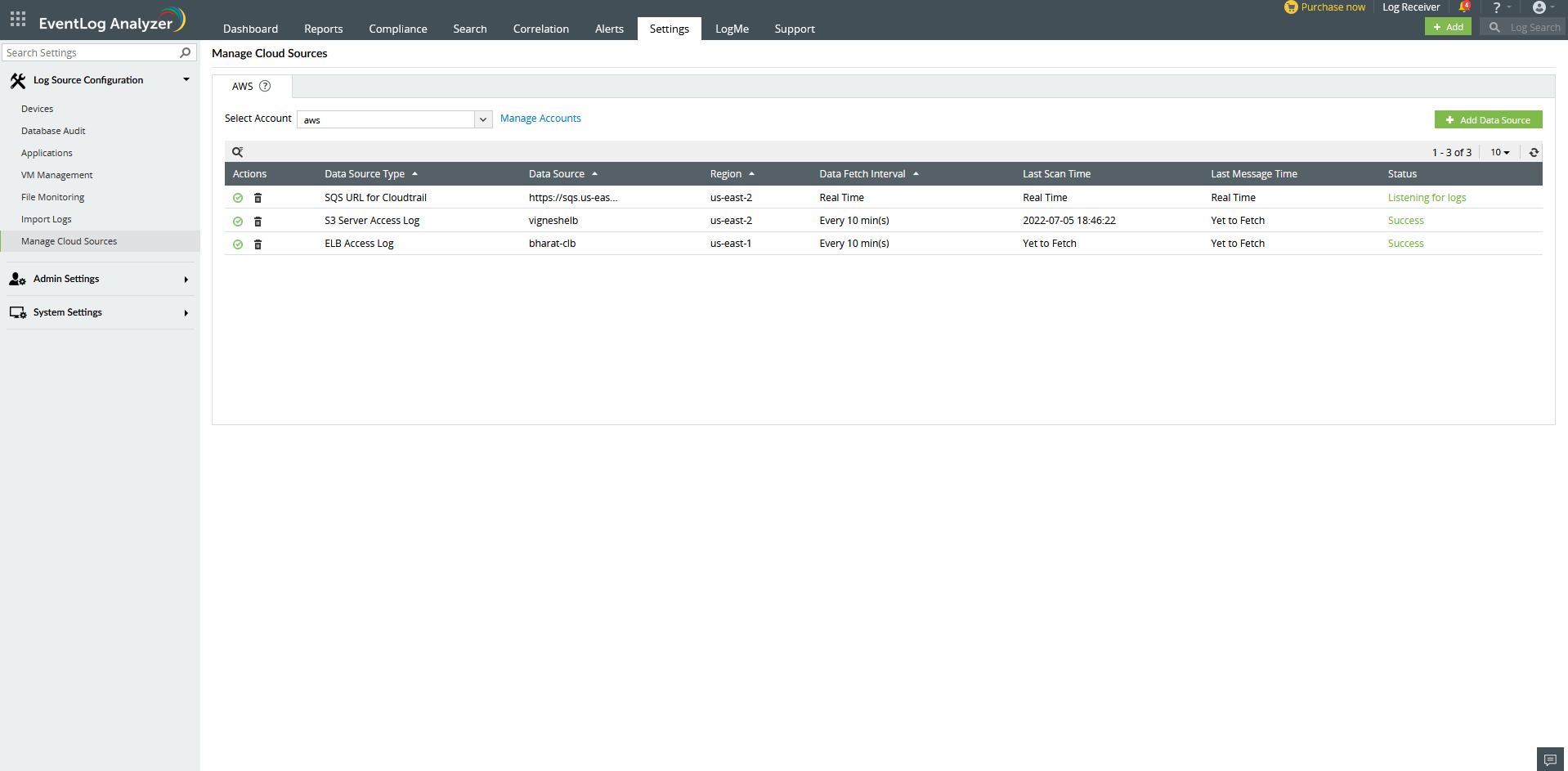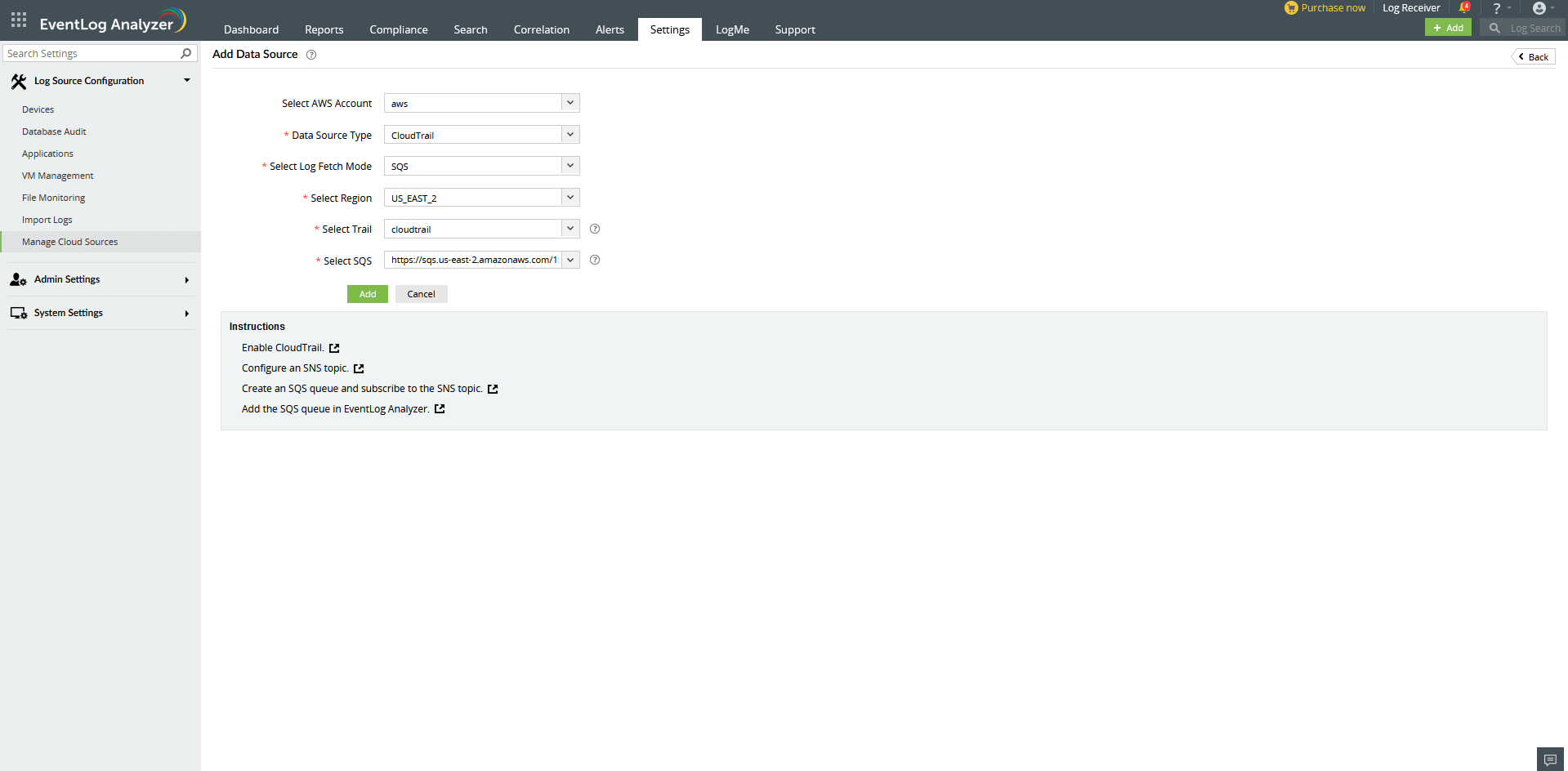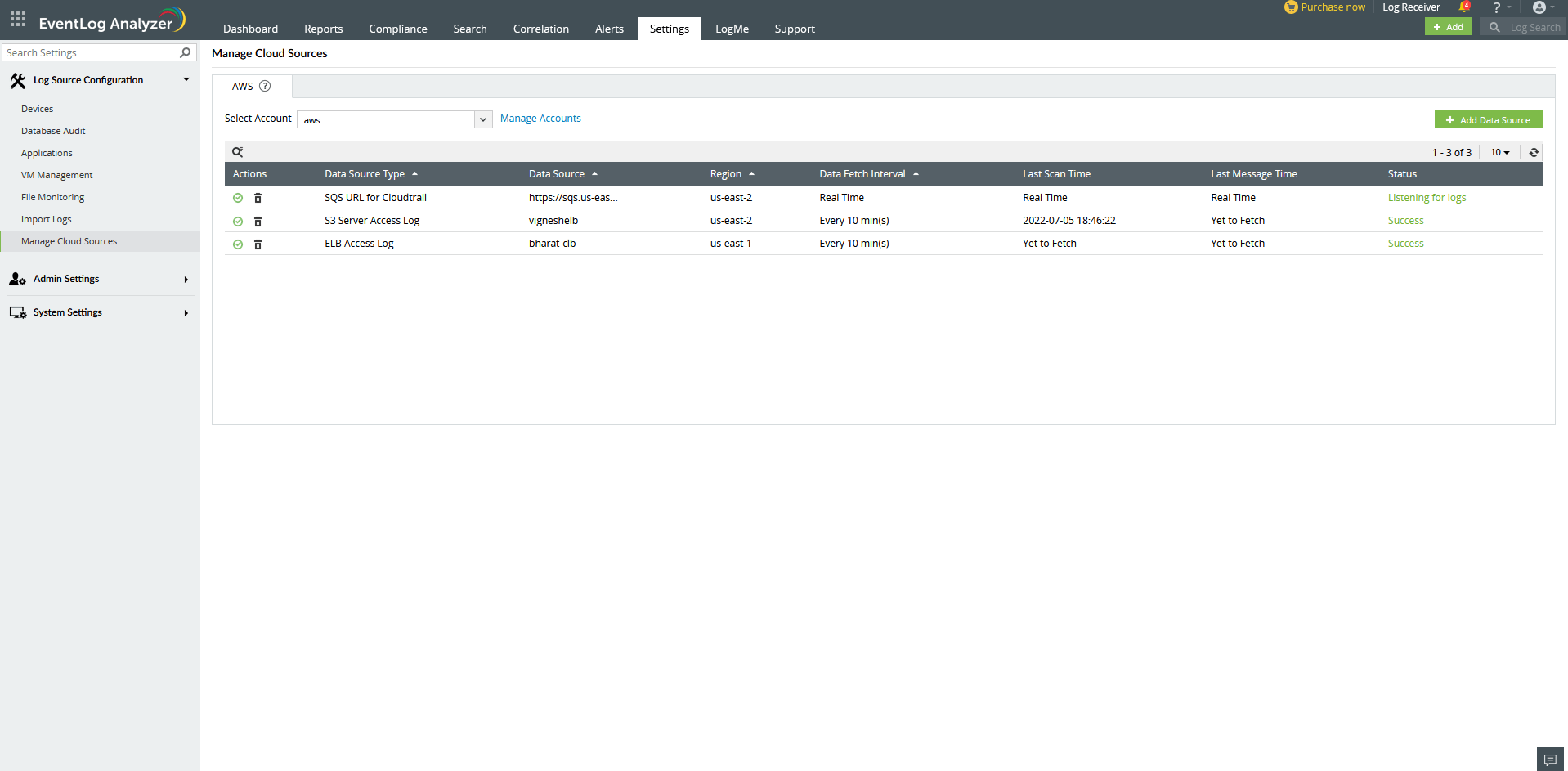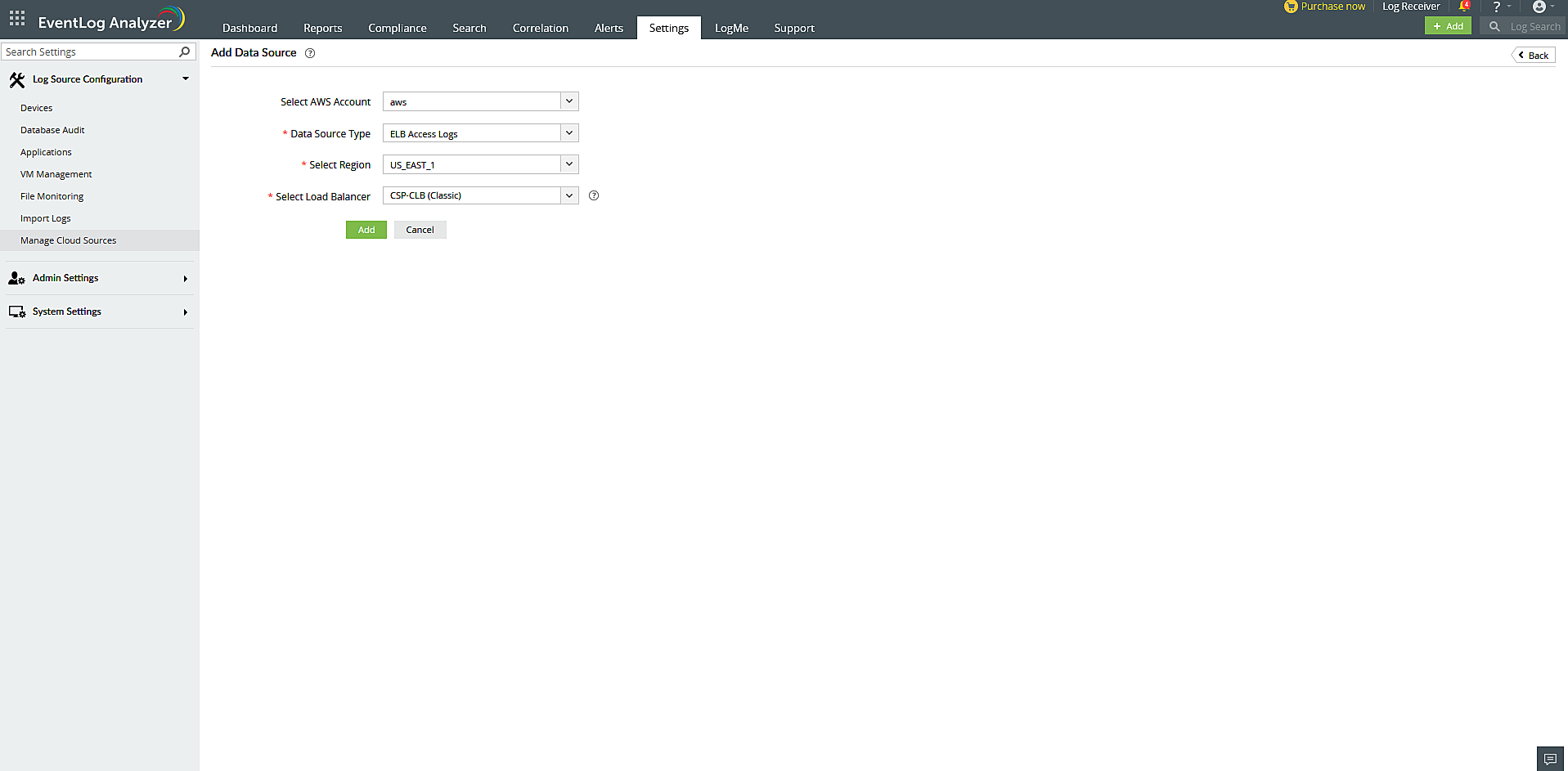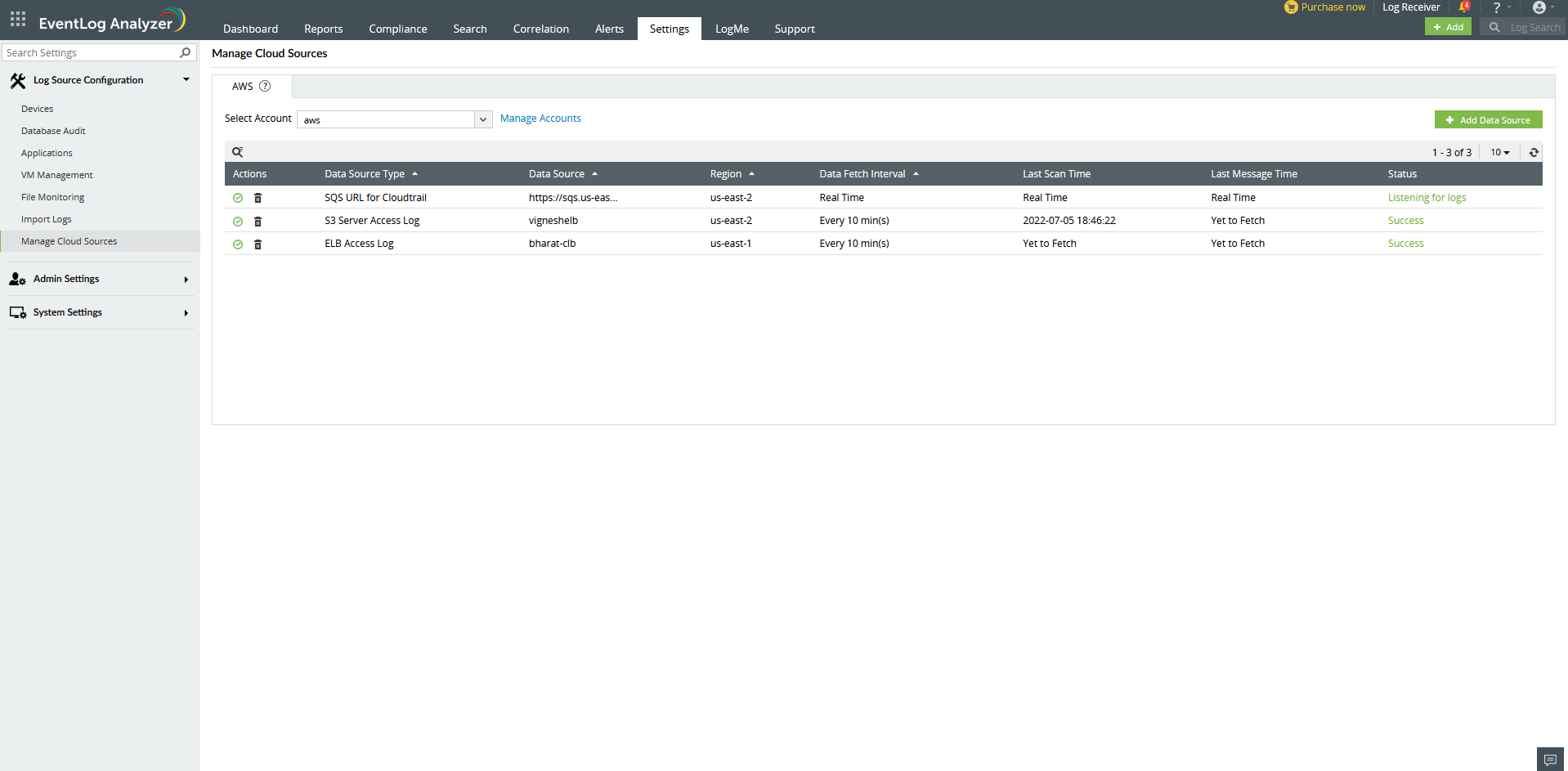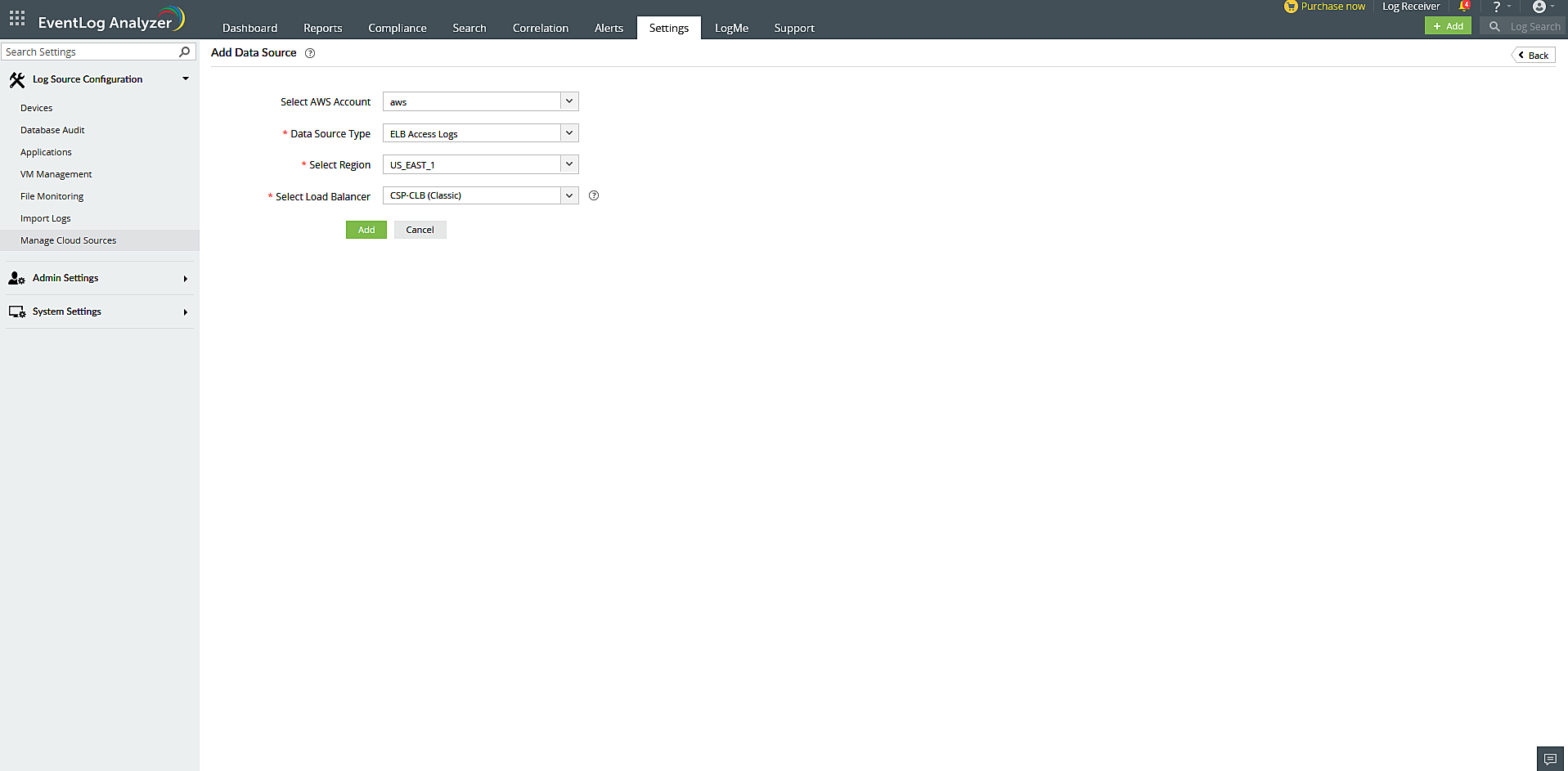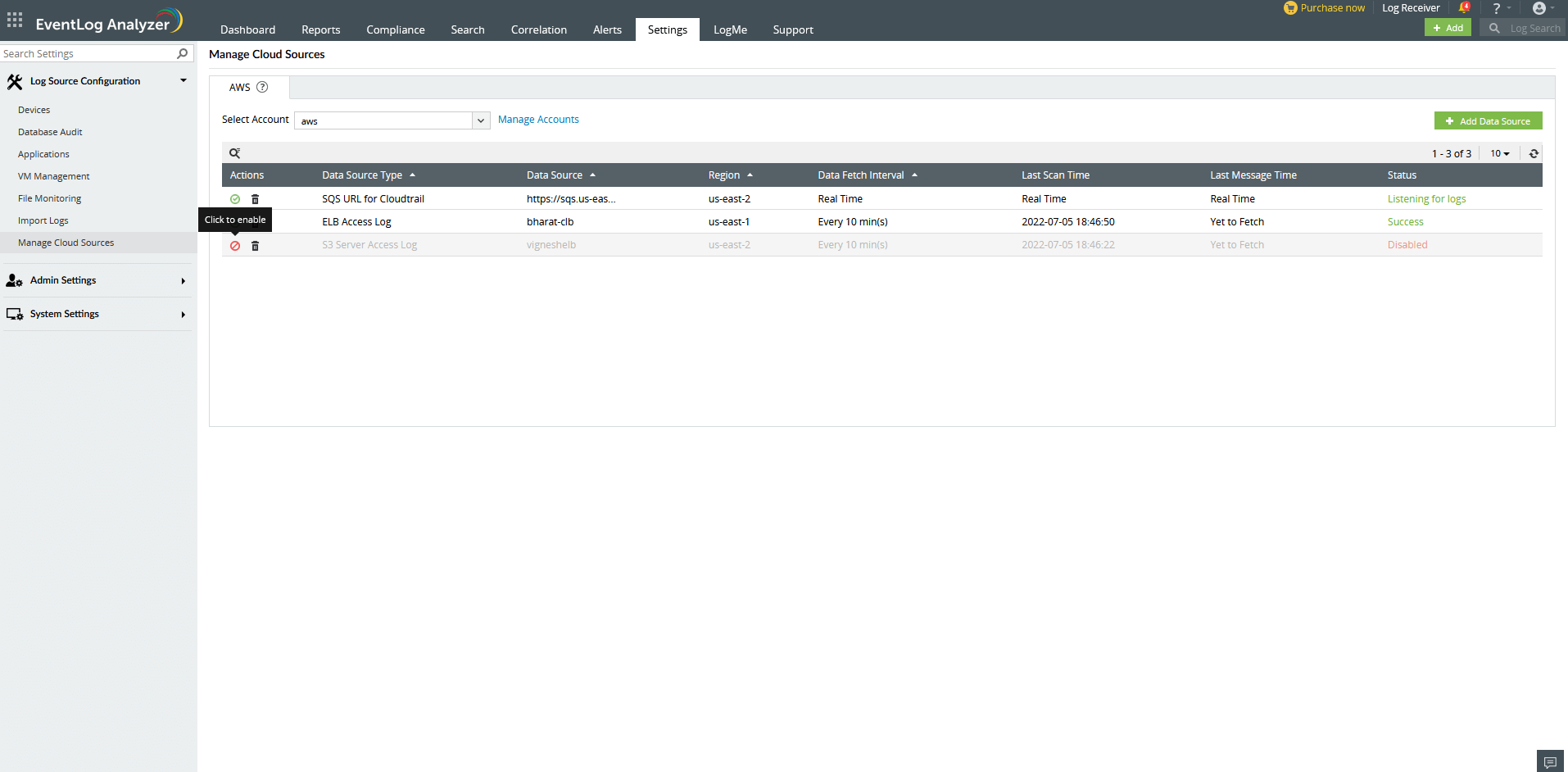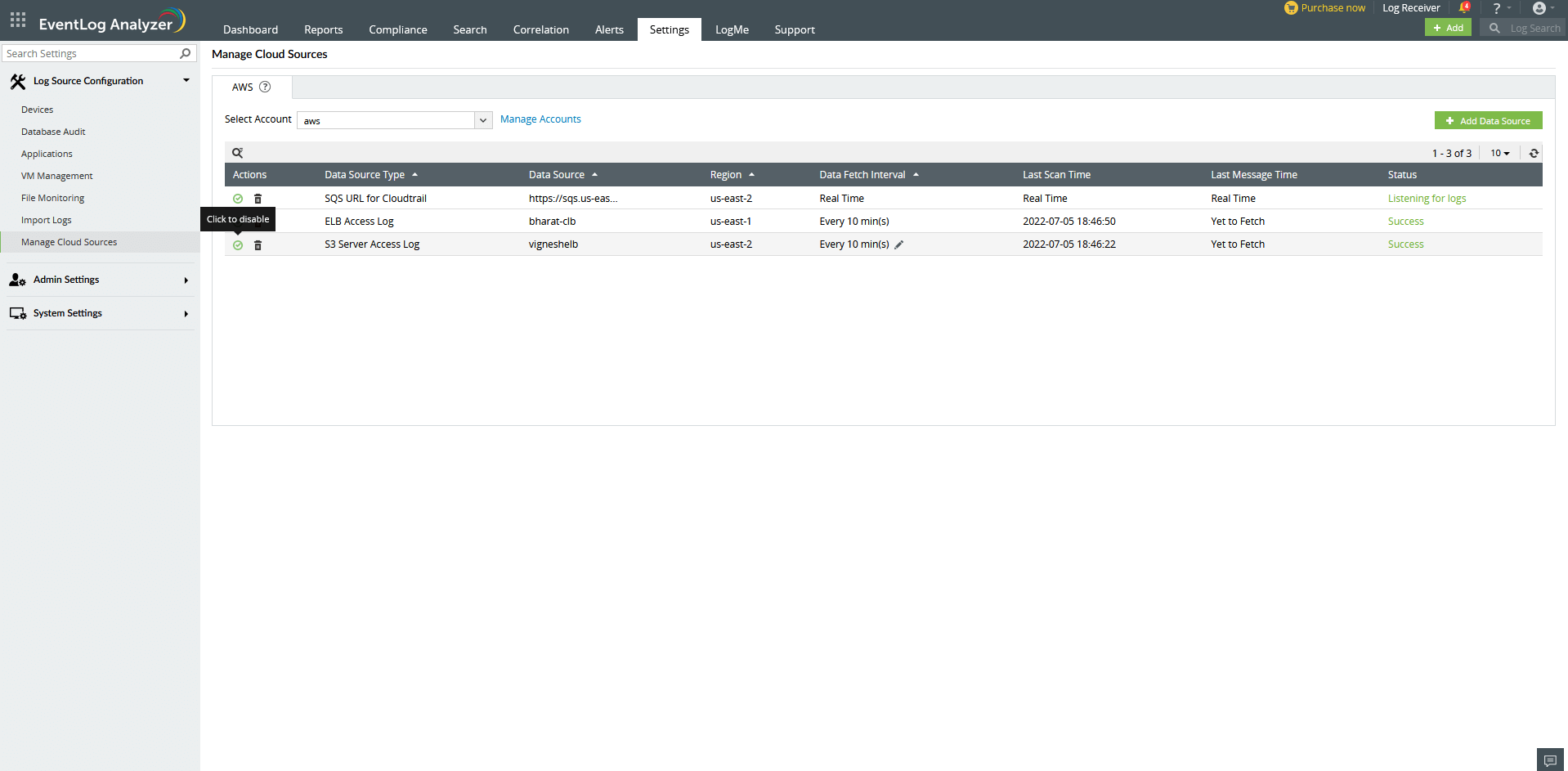Amazon Web Services (AWS)
To monitor your AWS environment, EventLog Analyzer requires a valid IAM user with necessary permissions. The solution will use the designated IAM user to collect logs from your AWS environment.
Note: EventLog Analyzer supports all AWS regions, except the AWS China (Beijing) region.
Creating a new IAM user in the AWS console
An IAM user is an entity that you create in AWS to represent the person or service that uses it to interact with AWS.
To create a new IAM user, follow these steps.
- Login to the AWS console.
- Navigate to IAM
- Go to AWS Services → Security, Identity and Compliance → IAM.
- Create a new user:
- Select Users from the Left pane and click on Create User.
- Enter an appropriate User name and click Next.
- Attach Policies
- Finalize the user creation
- Verify the details and click Create user.
- Create security credentials
- Click on the created User.
- Go to Security Credentials and click on Create access key under the Access keys section.
- Choose Third-party service and check the confirmation box.
- Click Next and then click Create access key.
- Download the .csv file to save the Access key and Secret access Key.
The generated access key and secret key pair should be used inside EventLog Analyzer to configure the AWS account.
Enter AWS credentials in EventLog Analyzer
- Go to the EventLog Analyzer console.
- Click on EventLog Analyzer Account Settings
- Click on Add Account
- Select the Cloud Type as AWS.
- Enter a Display name in the given box.
- Enter the Access Key ID and Secret Access Key of the IAM user in the given fields.
- Add CloudTrail.
To setup logging for your AWS environment, refer S3 server access logging and ELB access logging.
Manage Cloud Sources:
Logging setup: Amazon CloudTrail Logs
CloudTrail is an API log monitoring web service offered by AWS. It enables AWS customers to record API calls and sends these log files to Amazon S3 buckets for storage. The service provides details of API activity such as the identity of the API caller, the time of the API call, the source IP address of the API caller, the requests made and response elements returned by the AWS service. In addition, it captures a few non-API events (AWS service events and AWS console sign-in events).
CloudTrail can also be configured to publish a notification for every log file that is delivered, allowing users to take action upon log file delivery.
(I) Enable CloudTrail
- Login to the AWS console.
- Go to AWS Services → Management Tools → CloudTrail.
- Click Add new trail.
- Click Advanced and fill in the missing information.
(II) Configure an SNS topic
Create an SNS topic.
Select the following options:
Apply trail to all regions → Yes
Create a new S3 bucket → Yes
S3 bucket → Provide a new name
Log file prefix → Provide the prefix
Encrypt log fies → No
Enable log file validation → Yes
Send SMS notification for every log file delivery → Yes
Create a new SNS topic → Yes
New SNS topic → Name the topic
Select → Create
(III) Create an SQS queue and subscribe to the SNS topic created in Step II
- Go to AWS Services → Messaging → Simple Queue Service (SQS).
- Click Create New Queue and fill in the necessary information.
- Now, this SQS queue must be subscribed to the SNS Topic created when you enabled CloudTrail. Follow the below given steps.
- Select the SQS queue created.
- From the Queue Action drop down menu, select Subscribe Queue to SNS Topic.
Note: Amazon SNS raw message delivery needs to be disabled.
(IV) Add the created SQS queue as a data source in EventLog Analyzer
- Login to the EventLog Analyzer console.
- Go to Settings and click on Manage Data Source.
- Select CloudTrail from the Data source drop-down menu.
- Choose the AWS region, the trail and the SQS queue.
- Click Save.
Logging Setup: Amazon S3 server access logs
What is S3 server access logging?
Requests to access S3 bucket can be tracked via access logging. Each access log record provides details about a single access request, such as the requester, bucket name, request time, request action, response status, and error code, if any. This access log information can be useful in identifying the nature of traffic.
Follow the below given steps to add Amazon S3 server access logs as a data source in EventLog Analyzer.
- Login to the EventLog Analyzer console.
- Go to Settings > Configuration > Manage Cloud Sources and click on Add Data Source.
- Select S3 Server Access Logs from the Data source drop-down menu.
- Select the S3 Bucket for which you want to enable access logging.
- Click Configure..
Logging setup: Amazon ELB access logs
Elastic Load Balancer access logs capture information about requests made to load balancers and can be used to analyze traffic patterns and troubleshoot issues. These logs contain details such as the time the request was received, the client's IP address, latencies, request paths, and server responses.
Follow the below given steps to add Amazon ELB access logs as a data source in EventLog Analyzer
- Login to the EventLog Analyzer console.
- Go to Settings > Configuration > Manage Cloud Sources and click on Add DataSources.
- Select ELB Access Logs from the Data source drop-down menu.
- Select the Region and Load Balancer for which you want to enable access logging.
- Click Configure.
Note: Currently EventLog Analyzer only supports classic load balancers. Network and application load balancers are not supported.
Enable/disable cloud source
Enabling a cloud source:
To enable a cloud source in EventLog Analyzer,
- Click the icon located under the Actions column for the data source you want to enable.
- The data source will be enabled.
Disabling a cloud source:
To disable a cloud source in EventLog Analyzer,
- Click the icon located under the Actions column for the data source you want to disable.
- The data source will be disabled.
Delete a cloud source
To delete a cloud source in EventLog Analyzer,
- Click the delete icon located under the Actions column for that particular data source.
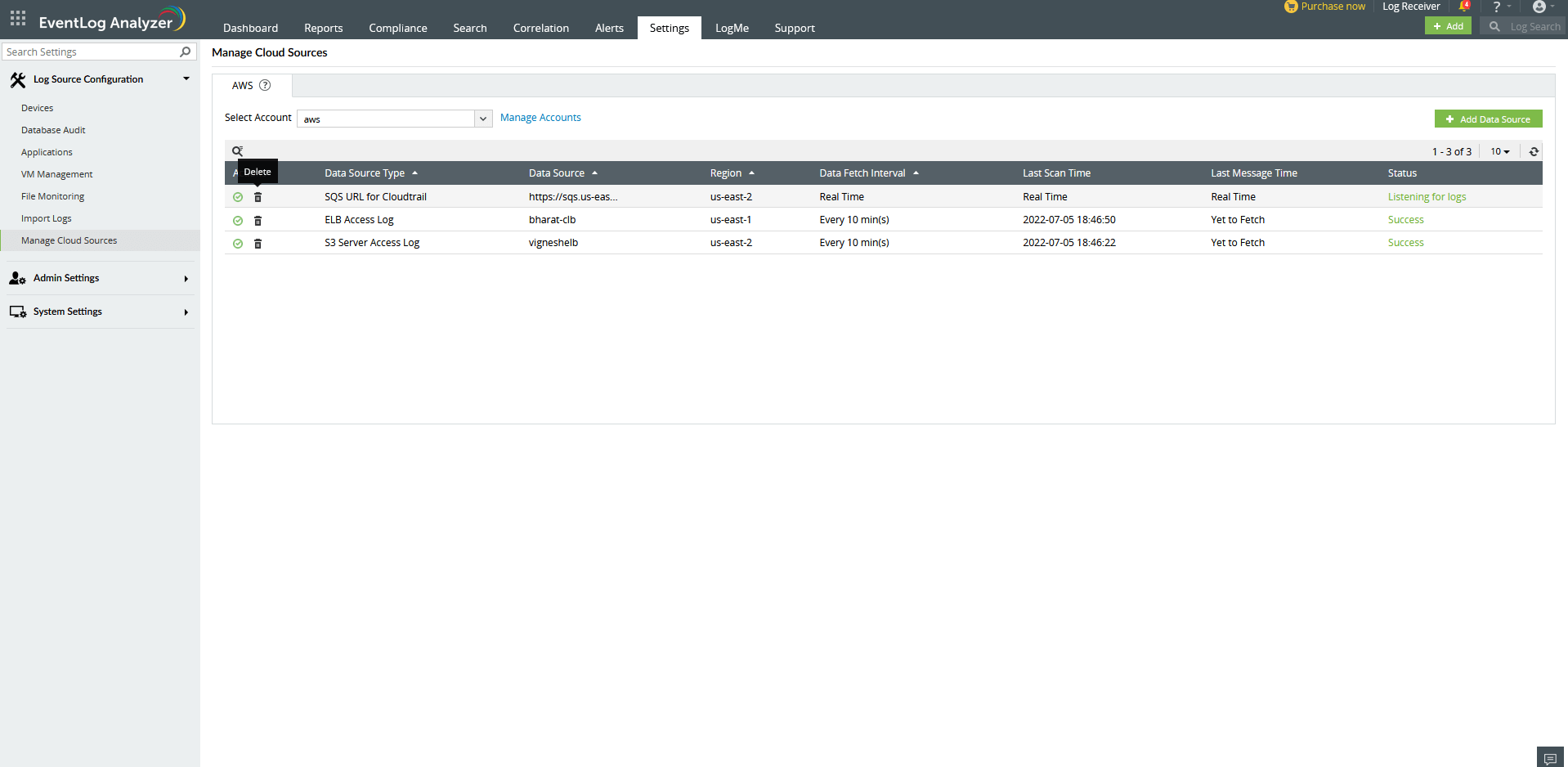
- The data source will be deleted.
Salesforce
EventLog Analyzer helps you analyze Salesforce user activity within the wider context of your overall security posture. By monitoring Salesforce activities, you will be able to spot suspicious login attempts, track privileged user activity, and identify unauthorized access attempts or data modification.
Creating a Connected App with permissions in Saleforce
- Login to your Salesforce account. Ensure that the user account with which you log in has enabled API.
Note:
Please make sure you have the Salesforce Event Monitoring add-on license to fetch and analyze Salesforce logs in EventLog Analyzer.
Ensure that you enable the below permissions in case of using a non-admin user :
Permissions required:
- View event log files (for collecting event logs)
- View setup and configuration (for collecting audit logs)
- View role and role hierarchy(for collecting audit logs)
- Navigate to Setup → Build → Create → Apps → Connected Apps.
- Click on New and fill in the Connected App Name, Contact Email, and Callback URL.
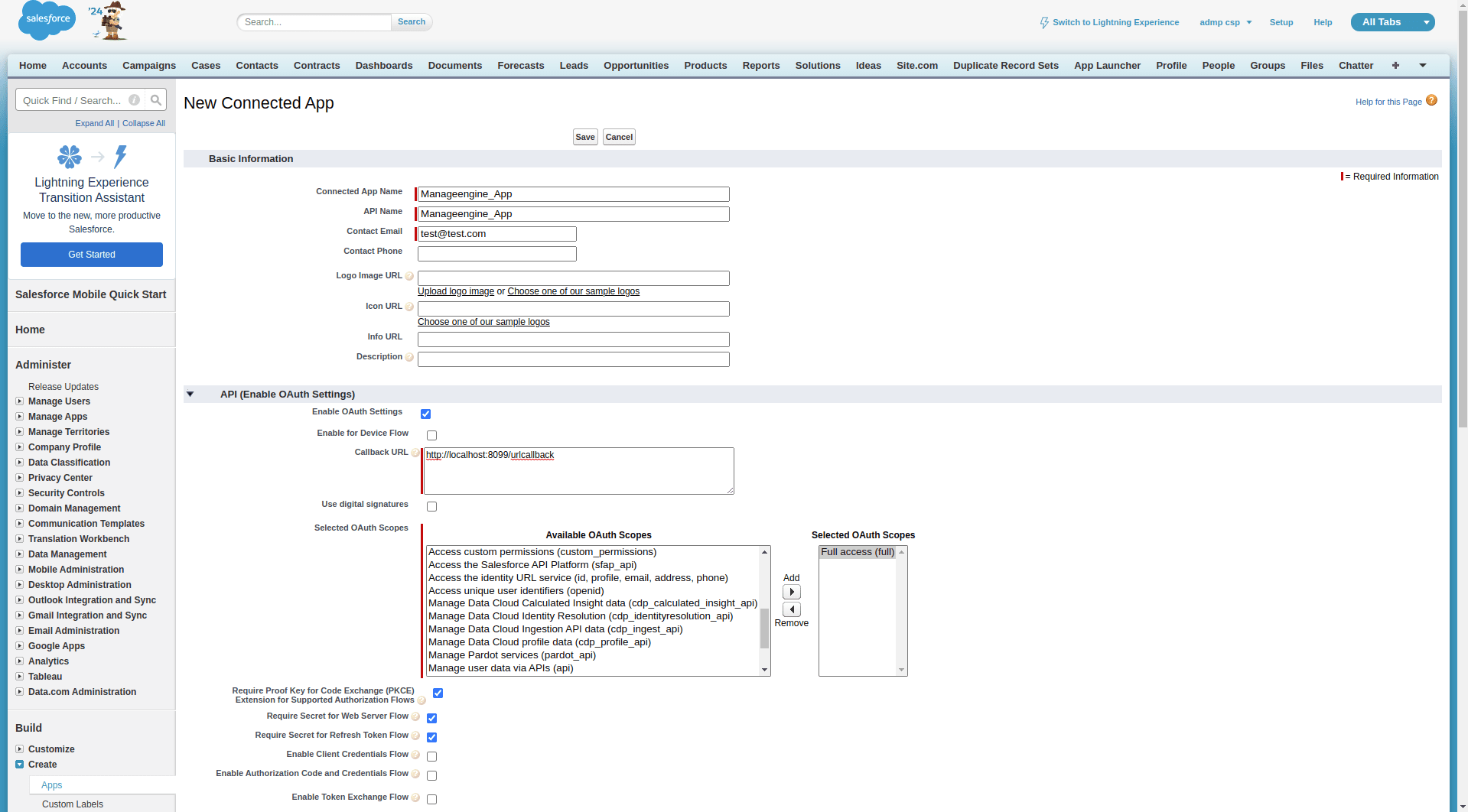
- Enable the OAuth Settings and grant Full access.
- Click Save. The Connected App will be created.
- Click Continue to view the Consumer Key and Consumer Secret.
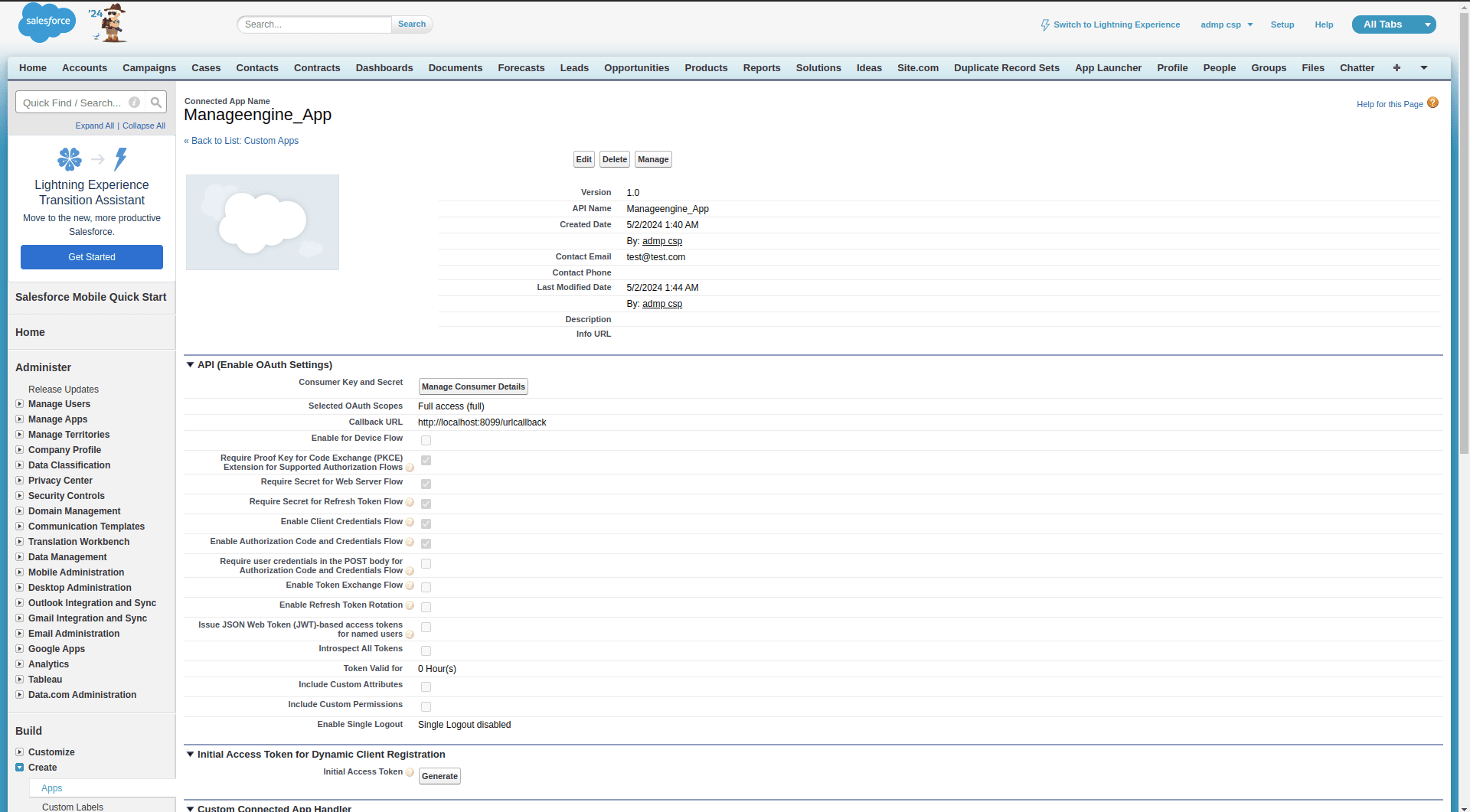
- Navigate to Setup → Administer → Manage Apps → Connected Apps.
- Click on the newly created Connected App. Under OAuth Policies > IP Relaxation, select Relax IP restrictions from the drop-down.
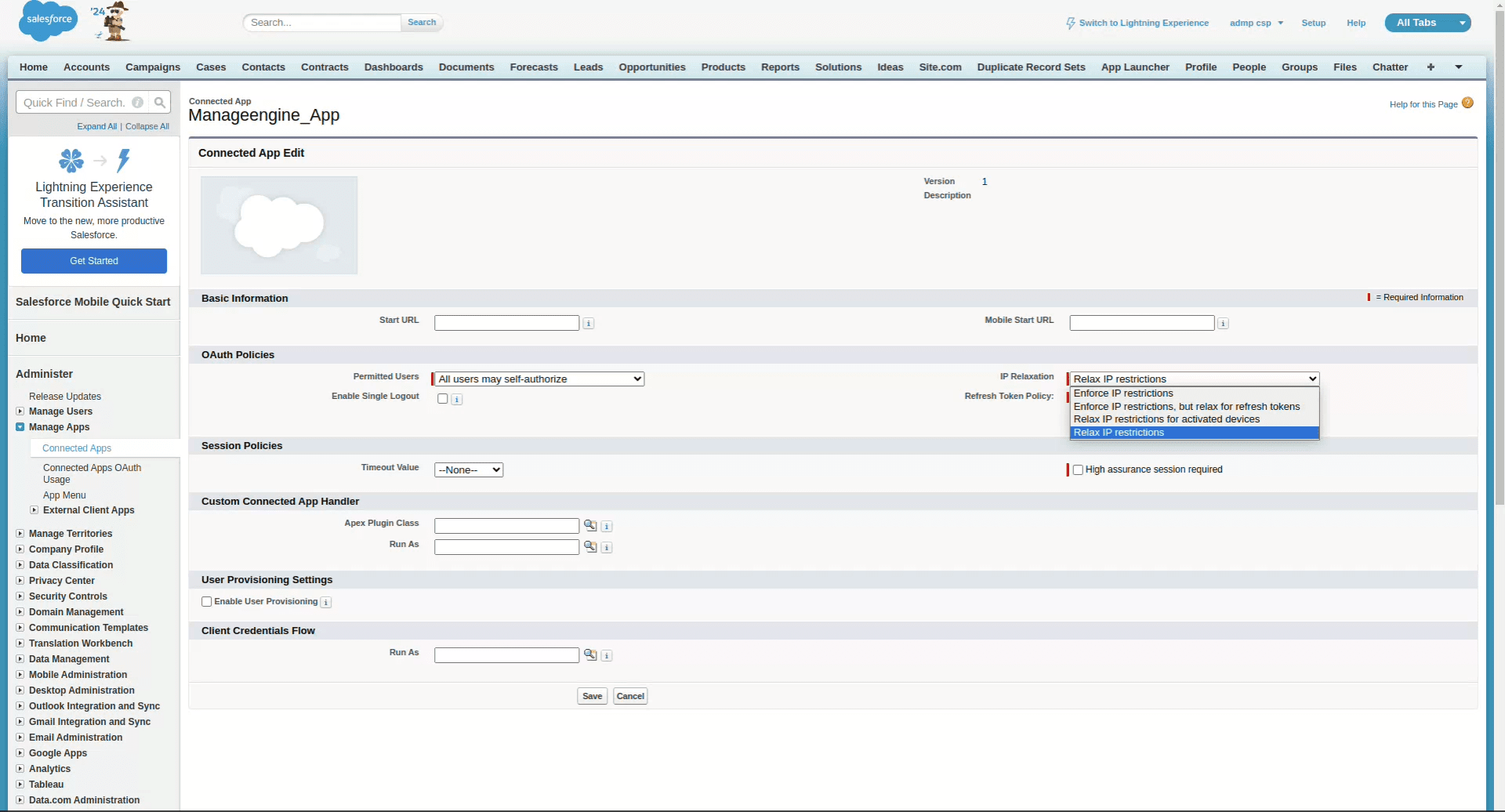
- Click Save.
How to get the Salesforce-client-url
- Open the login page of Salesforce and copy the Login URL.
For instance, https://testingtech-ap48.my.salesforce.com
- Paste the URL in the Login URL field in the format,
https://login.testingtech-ap48.my.salesforce.com.
Note: Ensure that 'login.' is added after https:// in the Salesforce login URL.
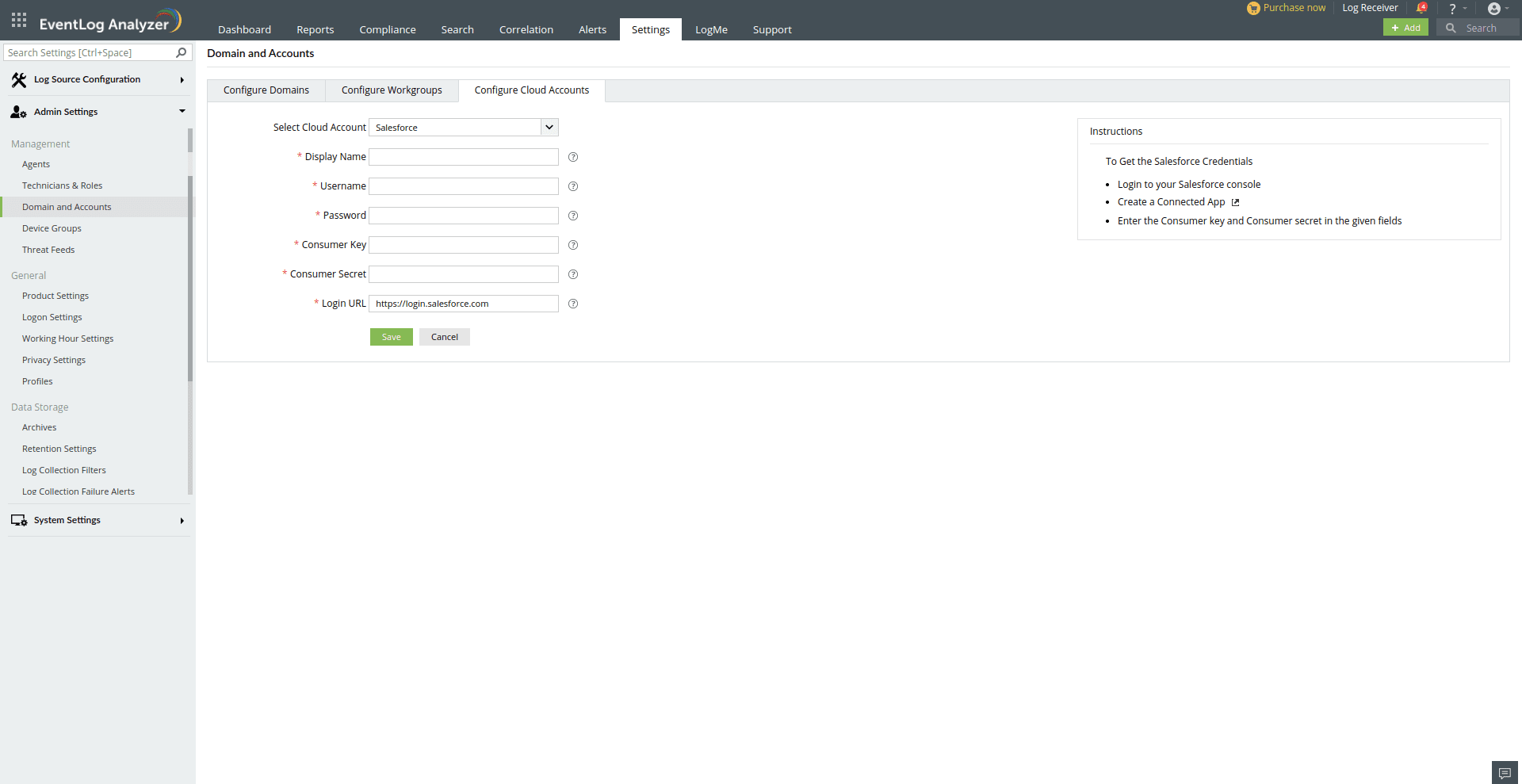
Enter the Salesforce credentials in EventLog Analyzer
- Click on the Settings tab.
- Navigate to Admin Settings -> Under Management - Domain and Accounts -> Configure Cloud Accounts.
- Select the Cloud Account type as Salesforce.
- Enter a Display Name in the given box.
- Enter the Username, Password, Consumer Key, Consumer Secret and Login URL in the given fields to enable EventLog Analyzer to start collecting logs.


